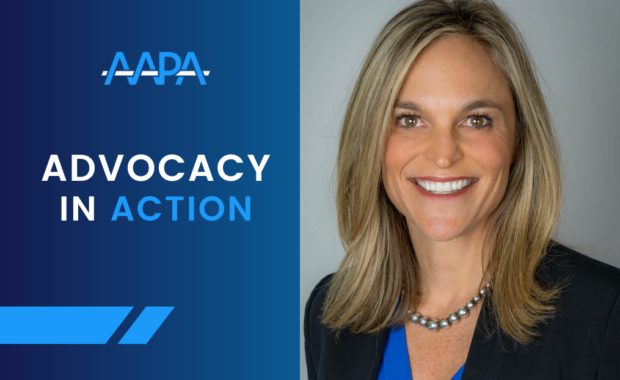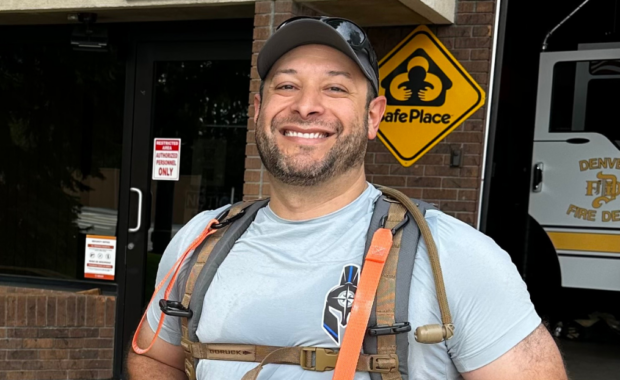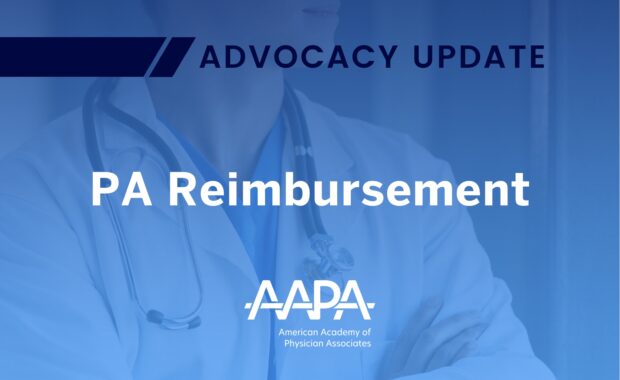Improving Access to Healthcare in Alaska’s Rural Villages
PA Quana Ticket Trains Community Health Aides, Who Play a Vital Role in Alaska’s Tribal Health System
By Jennifer Walker
November 21, 2023
Before Quana Ticket became a PA, she was a community health aide in Selawik, a village of about 809 people in the Northwest Arctic Borough of Alaska. The community consists of three pieces of land connected by two bridges that run over the Selawik River. Kotzebue, known as the “hub” among its surrounding villages because it is the closest village with a hospital, is 73 miles away and accessible only by plane year-round or snow machine in the winter.

Here, Ticket was one of seven community health aides at the Selawik Community Health Clinic, the only local healthcare facility. In this role, “We’re trained in how to do histories and how to do exams, then how to come up with an assessment and a plan for each patient,” says Ticket, adding that she also learned CPR and was trained as an EMT, and that, as the youngest health aide, she learned a lot from the other health aides at the clinic.
To provide this care to the Selawik community, Ticket used her Community Health Aide Manual – a crucial resource for community health aides, she says – which guided her in performing these exams on every system of the body, from the ear and the nose to the abdomen and the musculoskeletal system. Ticket charted her findings, then communicated with physicians in Kotzebue to make a diagnosis. Sometimes patients were treated at the clinic. Other times, they took a Medivac or plane to Kotzebue or Anchorage if they needed X-rays, CAT scans, or surgery, or if they needed to be admitted to the hospital.
Now a community health aide instructor with the Alaska Native Tribal Health Consortium (ANTHC), Ticket has trained 150 community health aides, a sizeable portion of ANTHC’s 550 community health aides who practice in more than 170 rural Alaskan villages.
“Most villages nowadays have community health aides because there are no doctors in the area,” says Ticket, adding that the community health aide program started in 1960 in response to the tuberculosis epidemic. “Community health aides are so important for the people in the villages.”
Inspired by Other Health Aides as a Child
Ticket grew up in the village of Noorvik, which has a population of 694, on the Northwest Arctic Borough of Alaska. There are only gravel roads there, so visitors have to take a plane to get to the village. Groceries are expensive – a gallon of milk can cost $9.00 – so people in Noorvik live a subsistence lifestyle, gathering food like caribou, moose, and berries in the spring and summer months to store for the winter. Ticket has fond memories of going to fish camp as a child, where her family would gather, smoke, and dry fish to last through the winter months.
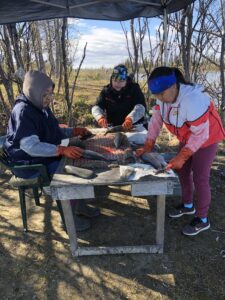
As a child, Ticket also went to her village’s community health clinic nearly every month. “I got inspired by the community health aides when they helped me and other people get well,” says Ticket, who was diagnosed with strep throat frequently until she had her tonsils removed at the age of 10. These experiences solidified Ticket’s interest in healthcare. “I remember being small and pretending to play at being a health aide,” she adds.
Years later, after Ticket and her husband, Jon, had their first child in 1996, the family moved to Anchorage, where Ticket decided to enroll in a certified medical assistant training program. “I thought I would start there to see if I really enjoyed working in healthcare,” she says. Ticket and her husband balanced work and school with childcare, with her husband working during the day and Ticket doing her schoolwork in the evenings.
After finishing the program, Ticket’s first job was in family medicine with the Southcentral Foundation, an Alaska Native-owned, nonprofit healthcare organization. Ticket enjoyed assisting the physicians and checking in patients, as well as giving immunizations and drawing blood. “Some people came from the villages, too, and I enjoyed being able to help them,” she says.
Then in 2002, “We got homesick and wanted to move home,” Ticket says. This is when they moved to Selawik, her husband’s village, and Ticket started working as a community health aide at the Selawik Community Health Clinic, the only place in the village where residents had access to healthcare.
Improving Access to Care in a Remote Village
At the Selawik Community Health Clinic, patients came in with heart issues, chronic conditions like diabetes, kidney failure, and more. There were also trauma cases like gunshot wounds, stabbings, and broken ankles, the last of which was the result of patients walking on Selawik’s bumpy roads that are made of boards.
Caring for each patient always started with a thorough exam of the affected system of the body. The Community Health Aide Manual – then a thick book, but now available on an iPad – was the resource that Ticket used while performing her exams. “Our manual is written very well, step by step, and the health aides have to practice by it,” she says.
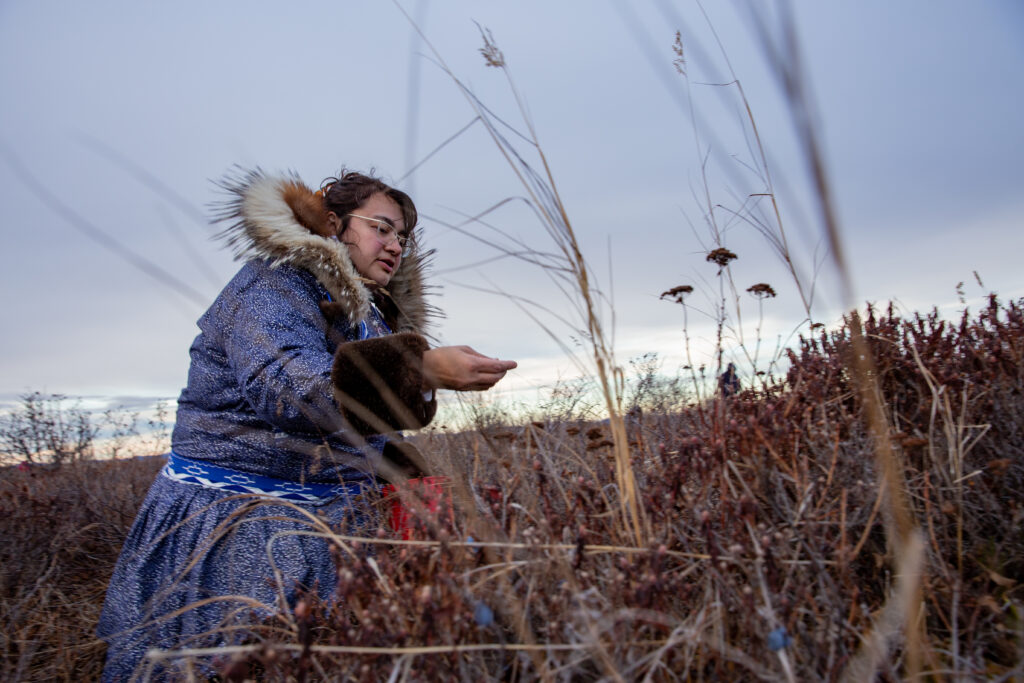
For example, if a patient came in with an earache, Ticket looked in her manual for instructions on how to perform an ear exam and what to look for, such as drainage or swelling in the canal, or a red or bulging ear drum. After performing the exam, Ticket wrote down what she thought was the issue and sent photos through telemedicine to physicians in Kotzebue, then communicated with those physicians on a final diagnosis. About three to four times a week, a Medivac was called to transport a patient to Kotzebue or Anchorage for further care.
Ticket shares a story about a patient that illustrates how community health aides fill an important role in the villages by providing care and, when necessary, ensuring their patients are transferred to other healthcare facilities. A child was walking on the frozen river when he got bumped by a snow machine and broke his leg. Ticket and the other health aides splinted his leg with SAM splints and shifted him to a sled that was attached to their snow machine. Then they carefully transported him over the bumpy boardwalks back to the clinic, where a Medivac picked him up to go to Anchorage for surgery.
During this time, Ticket also participated in four months of community health aide training, with each session lasting one month. She had a second child by then, a newborn, and she was breastfeeding him at the time. So Ticket brought her son to the trainings. A woman from the village also accompanied her to babysit her son while Ticket was in her sessions.
Ticket stayed in this position for five years and found it to be very rewarding. “I felt like I was able to help the village because we were the only healthcare,” she says. “I also really enjoyed helping the elders of the community. If they couldn’t come to the clinic, we went to their house to take care of them. I just enjoyed listening to their stories, and the elders were so thankful for their care.”
Feeling that She Could ‘Do More’
In 2007, Ticket and her family decided to move back to Anchorage so her sons would have more opportunities. There, she worked as a medical assistant again, this time in an OBGYN clinic. But “after being a health aide and doing all of the exams like a PA does or a doctor does, I knew I could do more,” says Ticket, adding that she was exposed to the PA profession through her community health aide training program’s ongoing education class.
After completing her prerequisites, Ticket began the PA program at the University of Washington School of Medicine, which has a location in Alaska, in 2012. She graduated in 2014 and worked for the Southcentral Foundation again for the next two years as a team coverage provider. Then, in 2016, she started her current position as a community health aide instructor with ANTHC. “I wanted to be more connected to the villages by training the health aides to help the people there,” she says.
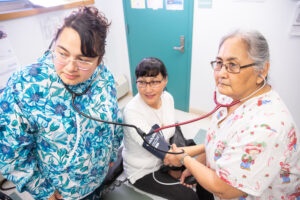
Ticket is now one of 10 full-time and five intermittent instructors who teach the community health aide training sessions in Anchorage. Along with using the Community Health Aide Manual to teach the aides how to perform thorough exams, Ticket also likes to teach lab skills; classes on wound care, such as suturing, taking out fishhooks, and draining abscesses; and medicine classes that focus on topics like injections. The program – which is available at four locations in Alaska, including Anchorage, where Ticket works, as well as Bethel, Fairbanks, and Nome – ideally takes two years to complete.
In this role, Ticket says, “I also get to meet people from so many villages and I like to hear about their cultures. And I get to know the health aides and teach them what I know. That’s what I like about this job. I can relate to them because I too grew up in the village and I know how it is to be a health aide back home.”
Beyond the Community Health Aide Program
Along with her role as a community health aide instructor, Ticket continues to work at the ANTHC Walk-In Clinic in Anchorage one day a week and some weekends. She is particularly passionate about encouraging her patients to get their colorectal cancer screenings. Ticket’s sister-in-law was diagnosed with colorectal cancer when she was 29, and she died from the disease when she was 30.
“There’s a really high prevalence of colorectal cancer in our Alaska Natives and American Indian populations,” she says. “So after helping my sister-in-law and seeing what she went through, I try to encourage my patients to start getting their screenings at age 40. Because if it’s caught early, then it can be treated.”
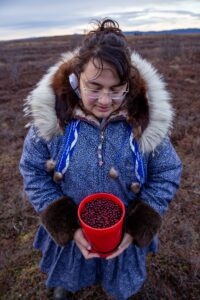
As an instructor, Ticket has also had representatives from other Tribal Health organizations sit in on classes with her and some of her teaching colleagues because they are thinking of adopting the community health aide program in their own cities. These representatives were from Albuquerque, New Mexico; Bemidji, Minnesota; Billings, Montana; the California Great Plains; Nashville, Tennessee; Navajo Nation in Arizona, New Mexico, and Utah; Oklahoma City, Oklahoma; Phoenix and Tucson, Arizona; and Portland, Oregon.
“They’re looking at our program to integrate it in their areas, too,” she says. “There’s a lot of rural communities that are far away from hospitals. The Community Health Aide Program like we have here in Alaska can greatly improve access to health care for all the people who live in their communities far away and who don’t want to move away [from their homes] and their way of life.”
Jennifer Walker is a freelance writer in Baltimore, MD. Contact Jennifer at [email protected]
Editor’s Note: This article was originally published in October 2022.
You May Also Like
PA Graduate Featured on TODAY Show Will Return to Navajo Nation to Practice
5 Ways to Incorporate Social Determinants of Health to Improve Patient Care
PAs Critical to New Mexico Rural Health Clinics
PA Program Works to Alleviate Provider Shortages in Rural Michigan
Thank you for reading AAPA’s News Central
You have 2 articles left this month. Create a free account to read more stories, or become a member for more access to exclusive benefits! Already have an account? Log in.
